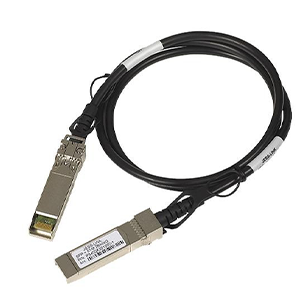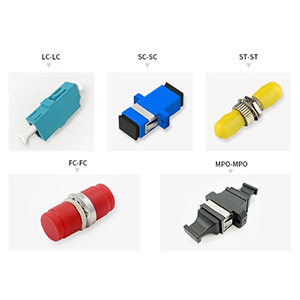Fiber optic splitters play an important role in optical communication networks. This article will explore the characteristics and applications of 1×8 PLC fiber optic splitters. We will first define the basic structure and working principle of 1×8 PLC fiber optic splitters and explain how they differ from other optical splitters. Next, we will analyze in depth the main features of 1×8 PLC fiber optic splitters, including high optical splitting ratio, compact and portable design, low optical power loss, excellent optical performance, and high reliability and stability. We will explain how these features improve the performance of optical communication systems.
Then, we will analyze the use of 1×8 PLC fiber optic splitters in typical application scenarios such as access networks and data centers, and explain their key role in each application. Finally, we will provide key indicators and selection recommendations to consider when selecting 1×8 PLC fiber optic splitters.
What is 1×8 PLC fiber splitter
Let me introduce you to the definition and characteristics of 1×8 PLC fiber splitter:
Definition of 1×8 PLC fiber splitter:
- PLC (Planar Lightwave Circuit) splitter is an optical splitter based on planar optical waveguide technology
- 1×8 PLC splitter refers to a PLC splitter with 1 input port and 8 output ports
- It uses the optical splitting structure made of optical waveguide on a planar substrate to achieve the separation of light waves
- In addition to the optical waveguide itself, the PLC splitter also includes other optical components such as optical waveguide couplers
1×8 Working principle of PLC fiber splitter:
- The light wave at the input end will pass through a specially designed optical waveguide branching structure
- Gradually divided into 8 output lights, the light intensity on each output port is basically equal
- This optical power equalization branching process is achieved through an optical waveguide coupler
- The entire branching process is integrated and manufactured on a flat substrate, with a compact structure
PLC branching The difference between the 1×8 PLC fiber splitter and other optical splitters:
- The traditional fiber splitter is based on the structure of fiber fusion branching
- The PLC splitter is an integrated splitter manufactured using planar optical waveguide technology
- PLC splitter has the advantages of small size, simple manufacturing process and low cost
- However, compared with the fiber splitter, the optical loss of the PLC splitter is increased
In short, the 1×8 PLC fiber splitter is an optical splitting device based on planar optical waveguide integrated manufacturing. It uses a unique optical splitting structure to realize the distribution of 1 optical signal to 8 channels. It has the advantages of small size and low cost. It is a common optical splitting product.
Main features of 1×8 PLC fiber splitter
Let me introduce you to the main features of 1×8 PLC fiber splitter in detail:
High optical splitting ratio:
- 1×8 PLC splitter can split 1 input light into 8 output lights
- This high splitting ratio design can maximize the use of input optical power
- It can greatly improve the signal utilization and system efficiency of the entire optical network
Compact and portable design:
- 1×8 The PLC splitter is manufactured using planar optical waveguide integration technology.
- Its size and weight are very small, with excellent integration and portability.
- This compact design helps improve the deployment flexibility of optical networks.
- It provides an ideal solution for application scenarios such as optical access networks.
Low optical power loss:
- The optical signal attenuation of the 1×8 PLC splitter is very low, usually less than 3.5dB.
- This low loss feature retains the input optical power to the greatest extent.
- It is conducive to improving the transmission performance and reliability of the entire optical transmission system.
Excellent optical performance:
- 1×8 PLC splitter has excellent optical indicators, such as uniformity, insertion loss, etc.
- These excellent optical parameters ensure the high quality of the output optical signal
- Provide guarantee for optical communication and other applications with strict requirements on the quality of optical signals
High reliability and stability:
- 1×8 PLC splitter adopts mature planar optical waveguide manufacturing process
- It has good anti-environmental interference ability and long-term stability
- These characteristics can improve the reliable operation and service life of the entire optical system
- Greatly improve the stability and risk resistance of the system
In short, 1×8 PLC fiber splitter plays an important role in optical access network, passive optical network and other fields with its high splitting ratio, compact design, low loss, excellent performance and high reliability. It is an optical splitting device with excellent performance.
1×8 PLC fiber splitter application scenario introduction
Let me introduce you to the use of 1×8 PLC fiber splitter in typical application scenarios:
Optical access network application:
- 1×8 PLC splitter is widely used in the equipment deployment of optical fiber access network
- Single optical fiber signal can be split to multiple user terminal devices
- This one-to-many splitting can greatly improve the utilization of optical fiber resources
- The compact design of 1×8 PLC splitter is conducive to access network deployment and maintenance
Data center application:
- In the optical interconnection network inside the data center, 1×8 PLC splitter plays an important role
- Single light source signal can be split to multiple servers or switches
- Improved the multiplexing degree of optical signals and optimized the allocation of optical fiber resources
- The low loss characteristics of 1×8 PLC splitter ensure the transmission quality of high-speed optical interconnection
Broadcasting and television network applications:
- 1×8 PLC splitter can be applied to optical fiber nodes of cable TV networks
- Distribute the central light source signal to multiple optical distribution nodes
- This one-to-many splitting helps to expand the coverage of TV signals
- The compact design of 1×8 PLC splitter simplifies node deployment
Test instrument application:
- 1×8 PLC splitters can be used for signal distribution of fiber optic test instruments.
- The test light source is divided into multiple outputs for use at different measurement points.
- This splitting design improves test efficiency and measurement accuracy.
- The excellent optical performance of the 1×8 PLC splitter ensures the reliability of the test.
In short, the 1×8 PLC fiber splitter is widely used in optical access networks, data centers, broadcasting and television networks, and test instruments due to its high splitting ratio, low loss, and compact design. It plays a key role in these applications.
Precautions for selecting 1×8 PLC fiber splitters
Let me introduce you to several key points to pay attention to when selecting 1×8 PLC fiber splitters:
Optical splitting ratio:
- Optical splitting ratio is one of the most important indicators of 1×8 PLC splitters
- 1×8 PLC splitters with splitting ratios that meet application requirements should be selected
- Too high splitting ratios may cause excessive optical power loss
Optical loss:
- 1×8 The insertion loss and uniformity indicators of the PLC splitter are critical
- PLC splitters with low insertion loss and high uniformity should be selected
- To ensure balanced optical power distribution at each output port
Optical performance:
- Optical parameters such as polarization-dependent loss and reflection loss are also important
- Select a suitable PLC splitter based on the application’s requirements for optical performance
- To meet the stringent requirements of the entire optical system for signal quality
Environmental adaptability:
- 1×8 PLC splitters need to adapt to the temperature, humidity, vibration and other factors of the working environment
- PLC splitter models that meet environmental requirements should be selected
- To ensure that the splitter can work stably in complex environments
Dimension compatibility:
- The dimensions of the 1×8 PLC splitter need to be compatible with the device interface
- PLC splitter specifications that match the application equipment should be selected
- To ensure smooth completion of optical and electrical connections and optimal performance
In short, when selecting a 1×8 PLC fiber splitter, it is necessary to comprehensively consider multiple key indicators such as optical splitting ratio, optical loss, optical performance, environmental adaptability and size compatibility. Only by selecting the most suitable PLC splitter product according to specific application requirements can its advantages be maximized.
Summary
1×8 PLC fiber splitter is a key component for building high-performance optical communication networks. Our company has long been focusing on the research and development and production of fiber-optic communication technology, and has rich experience in the application of 1×8 PLC fiber splitters. We provide various high-performance 1×8 PLC fiber splitter products to meet your needs in different fields such as access networks and data centers.
Our 1×8 PLC splitter adopts advanced manufacturing technology, has excellent optical performance, low loss and high reliability, and can effectively improve the quality and stability of network transmission. At the same time, our team of engineers will provide you with professional selection guidance and integration services to ensure that the 1×8 PLC fiber splitter performs best in actual applications. Contact us now to learn more. We will do our best to provide you with the best products and solutions.
1×8 PLC Splitter FAQ
A 1×8 PLC splitter is a passive optical device that takes a single input optical signal and splits it into eight equal-intensity output signals using planar lightwave circuit technology.
The 1×8 PLC splitter uses a series of optical power splitting elements, such as Y-branches or multimode interference couplers, to divide the input signal into eight separate output channels.
Key features include a compact and integrated design, low insertion loss, high port-to-port uniformity, and the ability to evenly distribute the input optical power across the eight output ports.
1×8 PLC splitters are widely used in fiber-to-the-home (FTTH) and other fiber optic access networks, where a single fiber input needs to be distributed to multiple end-users or devices.
Compared to traditional fused fiber optic splitters, 1×8 PLC splitters offer a more compact and integrated design, as well as improved performance and reliability.
1×8 PLC splitters typically utilize single-mode optical fiber, which is compatible with the most common wavelengths used in fiber optic communication systems.
Key parameters include insertion loss, uniformity, polarization-dependent loss, and return loss, which are used to characterize the overall performance and quality of the splitter.
Careful handling, connector mating, and fiber management techniques are required to ensure the reliable and efficient integration of the 1×8 PLC splitter into the fiber optic infrastructure.
1×8 PLC splitters are available in various packaging formats, such as bare chip, receptacle-style, and splice-on connectors, to suit different installation and integration requirements.
Ongoing advancements include the development of higher-port-count PLC splitters, the integration of PLC splitters with other photonic components, and the optimization of manufacturing processes to improve performance and cost-effectiveness.



